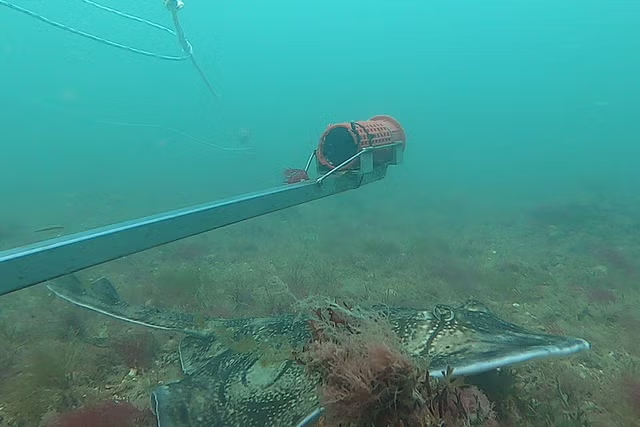Archaeologists have uncovered a previously unknown prehistoric settlement of "spectacular" size in southeastern Europe.
The settlement, which dates back around 7,000 years to the Late Neolithic period, is located near the Tamiš River in the Banat region of northeastern Serbia, a landlocked country in the Balkans.
"This discovery is of outstanding importance, as hardly any larger Late Neolithic settlements are known in the Serbian Banat region," research leader Martin Furholt from the Institute of Prehistoric and Protohistoric Archaeology (IPPA) at Kiel University in Germany, said in a news release.
The team has managed to fully map the extent of the settlement using geophysical methods, determining that it covers an area of roughly 11-13 hectares. It is also surrounded by between four and six ditches.
"A settlement of this size is spectacular. The geophysical data also gives us a clear idea of the structure of the site 7,000 years ago," Fynn Wilkes, co-team leader of the German-Serbian research team with the IPPA, said in the release.
As well as mapping the site, the archaeologists also surveyed the ground surface of the site in an attempt to find artifacts. This survey yielded material indicating that the settlement is associated with the Vinča culture, which is dated to between 5400 B.C. and 4400 B.C.
The Vinča culture is a prehistoric group that occupied a region of southeastern-central Europe in this period. Its territory now primarily corresponds to Serbia and Kosovo, as well as parts of Hungary, Romania, Bulgaria, Croatia, Bosnia, Montenegro and North Macedonia. Among other distinctive characteristics, the culture is known for producing some of the largest settlements in prehistoric Europe.
While the newly uncovered settlement—located near the modern village of Jarkovac in the province of Vojvodina—is associated with the Vinča culture based on the material found at the site, it also appears to have been strongly influenced by the regional Banat prehistoric culture.
"This is also remarkable, as only a few settlements with material from the Banat culture are known from what is now Serbia," Wilkes said.
Analyses of finds from the site are still ongoing, but the discovery of the settlement could help researchers to better understand prehistoric societies in the region.
"Southeast Europe is a very important region in order to answer the question of how knowledge and technologies spread in early periods of human history and how this was related to social inequalities," Furholt said. "This is where new technologies and knowledge, such as metalworking, first appeared in Europe."
Do you have a tip on a science story that Newsweek should be covering? Do you have a question about archaeology? Let us know via science@newsweek.com.
Disclaimer: The copyright of this article belongs to the original author. Reposting this article is solely for the purpose of information dissemination and does not constitute any investment advice. If there is any infringement, please contact us immediately. We will make corrections or deletions as necessary. Thank you.



